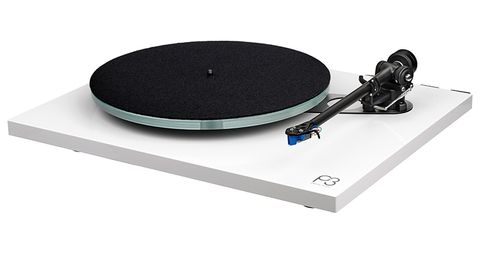The early 1980s were a period in which everyone was enamoured with new technology. From the video recorder to the ‘microcomputer,’ it appeared that anything with an LED display and an 8-bit silicon chip inside might solve all of the world’s problems. Sharp agreed, and applied its digital wizardry to the issue of LP track selection. This was before the CD, thus hearing track 4 on any given album by merely clicking a button was a new experience for most people…
Sharp, for example, included APSS (Auto Program Search System) in its top direct-drive deck of the time by adopting a ‘dual tube tonearm’ — one carried the cartridge as normal, the other a sophisticated optical sensor. When combined with a computer chip with the computing capability of an ant, it was possible to play Duran Duran’s debut album backwards! Rarely has technology been used so skillfully.
It was a top-of-the-line Japanese design that was superbly built and finished, and it came with a stunning glass cover that made competitors’ acrylic affairs look subpar. Although the RP-7100’s emphasis wasn’t on out-and-out performance, it sounded very nice, with a neat, musical character and plenty of detail – however it was prone to bad placement, so a suitable sub-table was required. The arm could track an Ortofon VMS20E moving magnet or something similar, and it created a pleasant noise for a totally automatic deck. It’s a fascinating curio these days, with great ‘space age’ style, but the Michell GyroDec has to be the king of eighties futurism.







